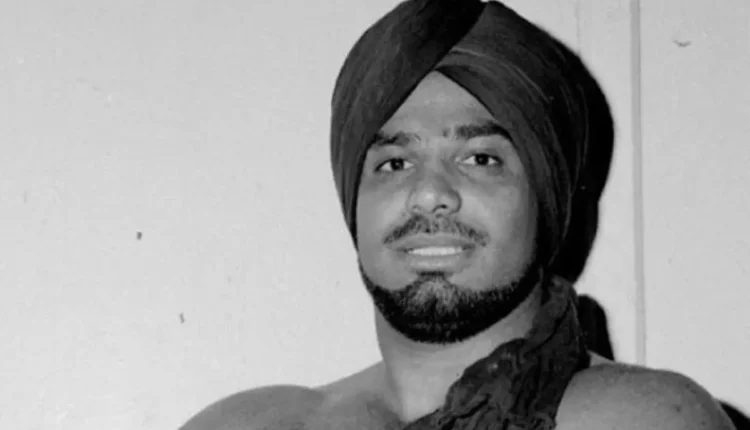Gadowar Singh Sahota, known in the wrestling world as Gama Singh, has left an indelible mark on the world of professional wrestling. Born on December 8, 1954, in Punjab, India, and later emigrating to Canada, Gama Singh became one of the most well-known Indo-Canadian wrestlers of the 20th century.
His journey, which took him from humble beginnings to becoming a top attraction in the world of professional wrestling, is nothing short of inspirational. Gadowar Singh Sahota captivated audiences globally, from Canada to Japan, South Africa, and the Caribbean, and left a legacy that remains an enduring part of wrestling history.
Early Life of Gadowar Singh Sahota: The Roots of a Wrestling Legend
Gadowar Singh Sahota’s story begins in Punjab, India, where he was born into a hardworking family. In 1963, his father emigrated to Canada to seek better opportunities, with his family soon joining him. Settling in Merritt, British Columbia, Gadowar Singh Sahota began to develop a passion for wrestling, excelling in amateur competitions during his school years. His commitment to discipline, athleticism, and dedication helped lay the foundation for what would become a stellar career.
It was during his time in British Columbia that Singh crossed paths with Bill Persack, an experienced wrestler who saw potential in the young athlete. Persack agreed to train Gadowar Singh Sahota, honing his skills over six months before suggesting that he venture to Calgary, Alberta, and train with Stu Hart’s renowned Stampede Wrestling. This move proved to be the defining moment in Gama Singh’s life and career.
The Birth of Gama Singh: Stampede Wrestling’s Villainous Star
In 1973, Gadowar Singh Sahota debuted in Stampede Wrestling, initially competing under his real name. However, it wasn’t long before he adopted the persona of “The Great Gama,” inspired by the legendary Indian wrestler, Gama Pehlwan. This transformation was symbolic of Gama Singh’s commitment to both his heritage and his passion for wrestling.
Throughout the 1970s and 1980s, Gama Singh became one of the most reviled villains in Stampede Wrestling. His ability to rile up audiences, combined with his remarkable technical skills, made him a top draw. The fans in Calgary, where Stampede Wrestling was based, loved to hate him.
Gadowar Singh Sahota’s heel persona drew intense reactions, often inciting both boos and threats, with people sometimes confronting him in public due to his on-screen character. This ability to blur the lines between wrestling fiction and reality was a testament to his dedication to his craft.
The Karachi Vice Era: Wrestling’s Cult Phenomenon
In the 1980s, Gama Singh’s career reached new heights when he became the leader of the infamous Karachi Vice stable, a group of wrestlers whose villainy made them a dominant force in Stampede Wrestling. The group included notable figures like Makhan Singh, Steve DiSalvo, and Kerry Brown, all under Singh’s ruthless leadership. Karachi Vice was not only a play on the popular TV show Miami Vice but also a nod to Singh’s South Asian heritage, taking inspiration from the city of Karachi, Pakistan.
The stable became a sensation, and Singh’s status as one of the most hated wrestlers in Calgary grew. Despite the hostility he faced, including racist comments and threats, Gama Singh never wavered. Instead, he used these challenges as motivation to continue performing at the highest level, showing resilience in the face of adversity.
International Success: From Canada to the World
While Gama Singh dominated the Canadian wrestling scene, his influence extended far beyond. He became a household name internationally, wrestling in Japan, South Africa, Germany, Kuwait, Dubai, and Australia. His tours across the globe, often alongside legendary wrestlers like Tiger Jeet Singh, solidified his status as one of the top Indian-origin wrestlers worldwide.
In Japan, Gadowar Singh Sahota competed in New Japan Pro-Wrestling (NJPW), squaring off against legendary names like Tatsumi Fujinami and Riki Choshu. In South Africa, he became immensely popular, competing in high-profile matches with renowned wrestlers like Bad News Allen. His international fame grew as he won championships in various promotions, including the WWC Caribbean Heavyweight Championship in Puerto Rico.
World Wrestling Federation (WWF) Stint
In the 1980s, Gama Singh’s talent caught the eye of Vince McMahon, the head of the World Wrestling Federation (WWF). Recognizing the value of having a popular Indian wrestler on the roster, McMahon brought Singh to the WWF, where he competed primarily on international tours in the Middle East, Australia, and Hawaii. Singh became a key figure in WWF’s expansion into international markets, helping the company tap into new audiences.
Though his time in the WWF was relatively brief, Singh’s impact was significant. He became one of the few wrestlers of South Asian descent to have competed on such a grand stage, laying the groundwork for future stars like his nephew, Jinder Mahal.
A New Era: Impact Wrestling and the Desi Hit Squad
In 2018, after years of semi-retirement, Gama Singh made a remarkable return to the wrestling world by signing with Impact Wrestling. He took on the role of a manager for the Desi Hit Squad, a stable of Indian wrestlers, including his son Raj Singh. Despite the challenges posed by the COVID-19 pandemic, which eventually led to his quiet departure from the company in 2020, Singh’s return demonstrated his enduring passion for the sport.
Beyond Wrestling: A Life of Success and Legacy
Gama Singh’s success was not limited to the wrestling ring. After years of wrestling, Singh wisely invested his earnings into real estate, becoming a successful real estate developer in Calgary. His success outside the ring mirrors the discipline and hard work he demonstrated in his wrestling career.
Moreover, Gadowar Singh Sahota’s legacy continues to thrive through his family. His son, Raj Singh, has followed in his footsteps as a professional wrestler, while his nephew, Jinder Mahal, reached the pinnacle of WWE success by winning the WWE Championship in 2017.
Also Read:Agnes Sam: The Indian-South African Writer Who Redefined Cultural Narratives

